Regularly tracking marketing analytics could be the game-changer for your health and wellness brand.
Understanding and leveraging data-driven insights is an absolute must within today’s booming health sector. With a vast amount of money pumped into the global wellness industry each year, understanding your slice of this pie can be overwhelming.
In this guide, you’ll explore five strategies for refining your marketing operations using analytics. Tap into these insights to surge ahead of the curve, boost your brand, and reinforce your bottom line. After all, making sense of big data is not just about playing catch-up; it’s about staying ahead.
Unleashing the Power of Marketing Analytics for Your Health and Wellness Brand
- Gain deep insights into what marketing analytics mean
- Understand why marketing analytics is a game-changer for health and wellness brands
Understanding Marketing Analytics
Marketing analytics is the practice of managing and studying metrics data to determine the ROI of marketing efforts and identify opportunities for improvement. It involves analysing patterns and insights derived from data to make informed marketing decisions. With the digitisation of business, marketing analytics has become an integral part of any successful strategy, especially in industries like health and wellness, where understanding customer behaviour and preferences can significantly influence success.
Marketing analytics focuses not solely on monitoring business performance but also on compiling and crunching data from multiple sources to gain a holistic view. This allows businesses to identify and evaluate new market opportunities, consumer trends, and industry developments. Technological advancements have made marketing analytics more accessible and user-friendly, making it an indispensable tool for many marketers.
Impact of Marketing Analytics on Decision Making
The main focus of marketing analytics is providing data-backed evidence to support decision-making. It equips marketers to make informed decisions by providing insights into customer behaviour and campaign efficiency. Its role is not limited to gauging past performance but includes predictive analysis for future strategies. With marketing analytics, every decision is propelled by real-time and accurately analysed data.
Why Marketing Analytics is Crucial for Health and Wellness Brands
In the health and wellness sector, effective marketing analytics could be the determining factor between a thriving and struggling brand. This is because the health and wellness industry thrives on personalisation. Every individual’s perception of health and well-being is unique, and marketing analytics steps in to make sense of these individual preferences.
In addition to understanding customer dynamics, marketing analytics helps health and wellness brands track and measure their marketing efforts. For instance, tracking digital advertisements, measuring social media engagement or understanding the impact of a particular health blog can be analysed through marketing analytics.
A detailed understanding of customer behaviour lays the foundation for precise targeting and personalised marketing strategies. By helping you understand where your audience is from, what they are looking for and how they react to your offerings, marketing analytics aids in crafting a customer journey that resonates with your target audience.
The Potential of Predictive Analytics for Health and Wellness Brands
Predictive analytics, a subset of marketing analytics, uses historical data, machine learning, and statistical algorithms to predict future outcomes. This is particularly relevant to health and wellness brands because it can help predict future customer behaviour. It uses data like browsing history, purchase history, and customer feedback to forecast customer preferences, making it a powerful tool in a marketer’s arsenal.
By implementing predictive analytics, health and wellness brands can offer proactive solutions to their customers, improving brand loyalty and driving customer satisfaction.
Five Proven Ways to Use Marketing Analytics to Boost Your Campaigns
- Understand your customers better and create personalised campaigns.
- Predict future results and optimise your strategies.
- Measure how successful your campaigns are.
Way 1: Utilising Customer Segmentation for Personalised Campaigns
Customer segmentation breaks down your target market into manageable groups, each with its preferences and behavioural patterns. By studying these groups, your brand can build personalised marketing campaigns geared towards these specific segments, increasing their effectiveness.
Example – This is how a skincare brand may use customer segmentation
Skin Type
Segment: Oily, Dry, Combination, Sensitive
Personalised Campaigns:
- For Oily Skin: Ads promoting oil-control skincare products like mattifying moisturisers and clay masks, along with educational content on managing excess sebum production.
- For Dry Skin: Email newsletters featuring hydrating skincare routines, discounts on rich moisturisers and hydrating serums, and tips for preventing moisture loss during colder seasons.
Age Range
Segment: Millennials (ages 25-40) vs. Baby Boomers (ages 55-75)
Personalised Campaigns:
- For Millennials: Social media ads highlighting anti-ageing prevention products like serums with antioxidants, sunscreen, and lifestyle tips for maintaining youthful skin.
- For Baby Boomers: Email campaigns featuring targeted anti-ageing solutions such as firming creams, collagen-boosting serums, and articles on skincare routines tailored to mature skin concerns.
Specific Skin Concerns
Segment: Acne-prone vs. Ageing
Personalised Campaigns:
- For Acne-prone Skin: Blog posts featuring skincare tips for managing breakouts, discounts on acne-fighting ingredients like salicylic acid and benzoyl peroxide, and testimonials from customers who have achieved clearer skin with the brand’s products.
- For Ageing Skin: Sponsored content showcasing anti-ageing treatments like retinol creams and vitamin C serums, virtual consultations with skincare experts, and before-and-after photos highlighting the effectiveness of anti-ageing products.
Way 2: Leveraging Predictive Analytics for Future Campaign Planning
Predictive analytics uses past data to predict future behaviour. In marketing, it can help estimate customer reactions to particular campaigns before they are even executed. This allows for better planning and strategy formulation, enhancing the likelihood of achieving desired results.
Example – Fitness brands and gyms
Fitness brands or gyms could utilise predictive analytics to anticipate when customers might be most likely to sign up for a membership or purchase workout gear. By analysing past behaviour, such as attendance patterns, activity levels, and engagement with fitness content, the brand could send targeted promotions or offers at optimal times to encourage continued engagement and loyalty.
Way 3: Using Social Media Analytics for Better Engagement
Social media analytics provide insights into how your audience interacts with your brand online. Whether it’s identifying high-performing content, tracking trends or evaluating campaign performance, understanding these metrics empowers you to create more engaging content for your audience.
Example – Social Media Analytics for a Nutrition Coach
As a nutrition coach, you can measure several specific metrics to gauge the effectiveness of their content and engagement strategies. Here are some key metrics to consider:
Engagement Rate – This metric measures the level of interaction your content receives from your audience. It includes likes, comments, shares, and clicks.
Reach – Refers to the total number of unique users who have seen your content. It helps you understand the size of your potential audience and how effectively you’re expanding your brand’s visibility.
Impressions – Impressions represent the total number of times your content has been displayed on users’ screens.
Click-Through Rate (CTR) – CTR measures the percentage of users who clicked on a link or call-to-action (CTA) in your content compared to the total number of users who viewed the content. It indicates the effectiveness of your content in driving traffic to your website or other desired destinations.
Follower Growth Rate – This metric tracks how your social media following grows over a specific period.
Conversion Rate – Conversion rate measures the percentage of users who take a desired action, such as signing up for a newsletter, downloading a resource, or making a purchase after interacting with your content. It provides insights into the effectiveness of your social media campaigns in driving meaningful outcomes.
Top Performing Content – Identify which types of content (e.g., recipes, educational posts, client testimonials) resonate most with your audience and generate the highest levels of engagement.
By tracking these specific metrics, a nutrition coach can gain valuable insights into the effectiveness of their social media efforts in educating and engaging their audience, attracting new clients, and driving meaningful outcomes in promoting healthy nutrition habits.
Way 4: Implementing A/B Testing for Campaign Optimisation
By comparing two versions of a campaign (version A and version B), A/B testing allows you to identify which performs better and why. This can lead to higher conversion rates and better ROI.
Example – A/B Testing for Email Marketing Campaigns for a Health and Wellness Subscription Service
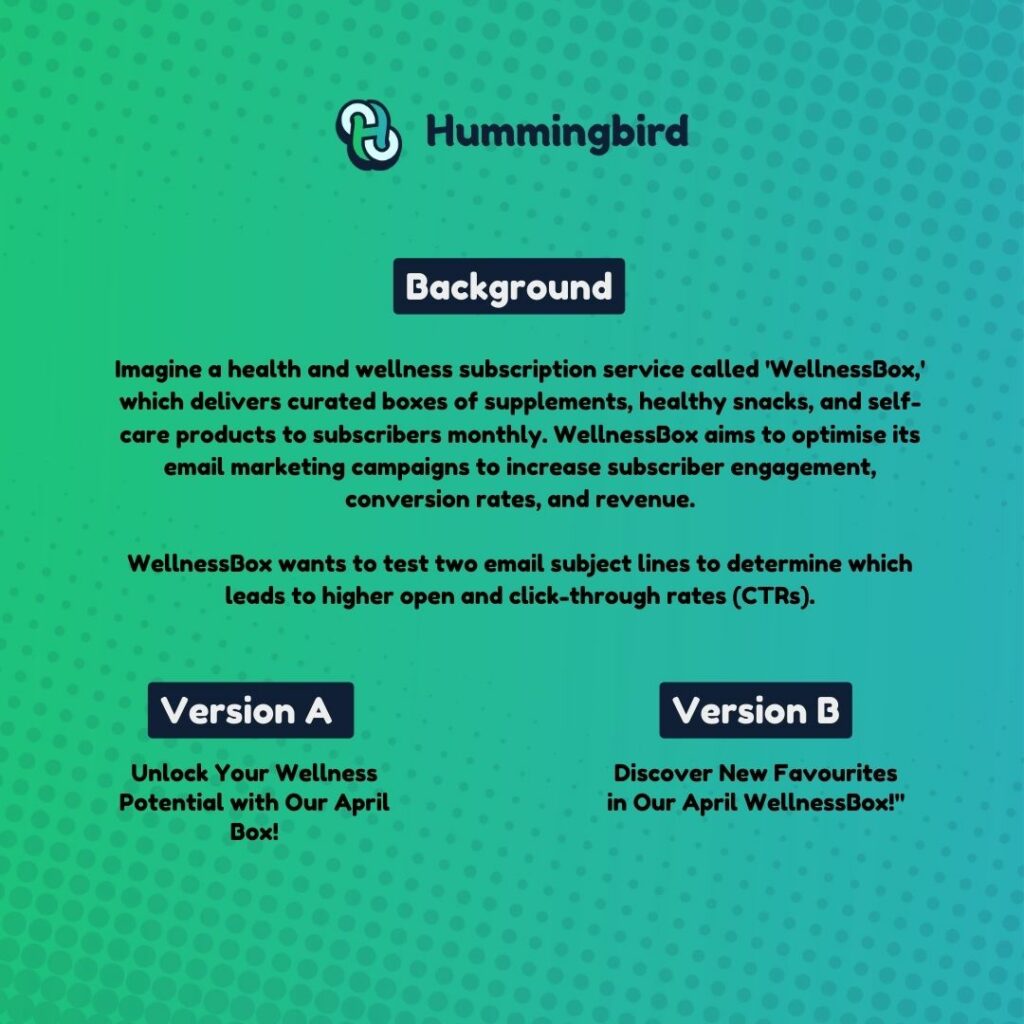
Version A emphasises the idea of achieving wellness goals and highlights the exclusivity of the April box. Version B focuses on exploration and discovery, encouraging subscribers to explore new products in the April box.
Whatever subject line has the highest open rate and CTR will be used as the subject line in the April email campaign.
Mailchimp and HubSpot are great tools for A/B testing.
Way 5: Measuring ROI to Evaluate Campaign Success
The ultimate goal of any marketing campaign is to generate a return on investment (ROI). By evaluating each campaign’s ROI, marketing analytics can provide quantifiable proof of campaign success or areas that need improvement.
Example – Health and Wellness brands measuring ROI
Health and wellness brands can calculate the ROI of their marketing campaigns by considering both the financial returns and the impact on brand awareness, customer engagement, and retention. Here are some examples of ways to measure ROI:
Sales Revenue: A yoga apparel brand launches a targeted email campaign offering discounts on its latest clothing collection. The email includes a unique discount code for recipients to use at checkout. By tracking the usage of this discount code, the brand can directly attribute any increase in sales during the campaign period to the email campaign’s ROI.
Customer Lifetime Value (CLV): A meal delivery service for fitness enthusiasts runs a promotional campaign offering new customers a free trial week of their service. Through rigorous tracking and analysis of customer behaviour post-trial, the brand can identify how many trial users convert to paying subscribers and continue the subscription. By calculating the total revenue generated from these subscribers over their lifetime, the brand can determine the ROI of the campaign based on CLV.
Brand Awareness and Reach: A health supplement company launches a series of educational webinars featuring nutrition experts discussing the benefits of various vitamins and supplements. They promote these webinars across their social media channels and partner with influencers in the health and wellness space to amplify their reach. By monitoring website traffic, social media engagement metrics (such as likes, shares, and comments), and tracking brand mentions across different platforms, the brand can measure the increase in brand awareness and attribute it to the ROI of the webinar campaign.
Getting Started with Marketing Analytics for Your Health and Wellness Brand
- Discover the must-have tools for marketing analytics
- Uncover methods to integrate marketing analytics into your strategy flawlessly
- Learn how to tackle common challenges
Essential Tools for Marketing Analytics
Data is the lifeblood of successful marketing campaigns. To unlock valuable insights from these data points, you must include various marketing analytics tools.
Here are some of the best tools for measuring analytics in the industry:
- Google Analytics is the most widely used analytics tool. It offers comprehensive insights into website traffic, user behaviour, conversions, and more. It’s excellent for understanding your audience demographics, acquisition channels, and content performance.
- Adobe Analytics provides robust analytics capabilities tailored for enterprise-level businesses. It offers advanced analysis, segmentation, and personalisation features, making it suitable for large-scale marketing operations.
- Mixpanel specialises in product analytics, focusing on user interactions within web and mobile applications. It’s valuable for understanding user engagement, retention, and conversion funnels, making it ideal for businesses with app-centric offerings.
- HubSpot – HubSpot’s analytics tools are integrated into its marketing automation platform, offering insights into website performance, email marketing effectiveness, social media engagement, and lead generation.
- Moz Pro provides SEO-focused analytics, helping businesses track keyword rankings, site visibility, backlinks, and competitive analysis. It’s beneficial for optimising search engine performance and improving organic traffic.
- SEMrush offers a comprehensive suite of tools for SEO, PPC, content marketing, and competitive analysis. It provides insights into keyword research, domain analytics, advertising strategies, and more, making it suitable for holistic digital marketing campaigns.
- Social media analytics: brands can keep track of the performance of their social posts with the insights available within each social media platform.
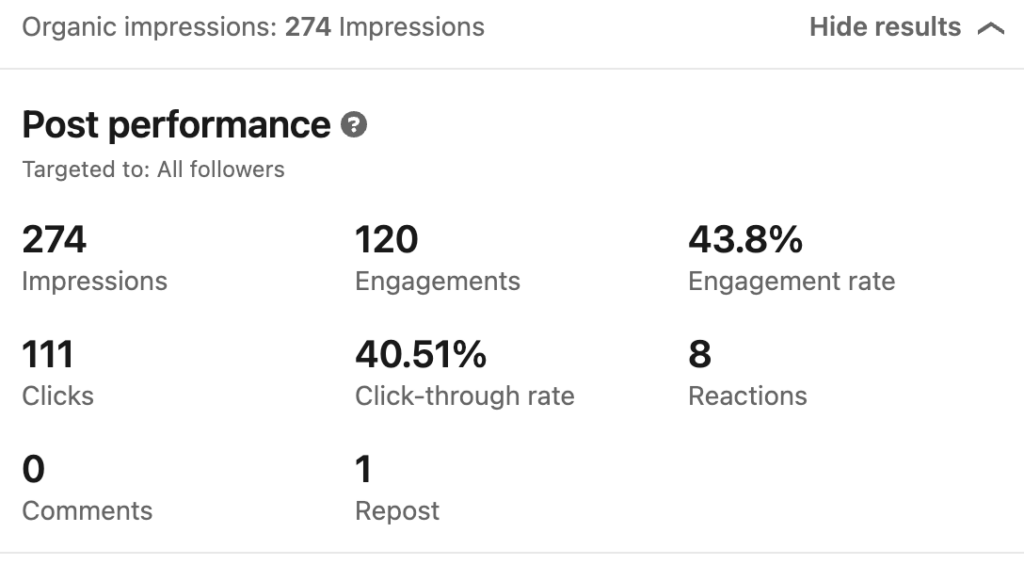
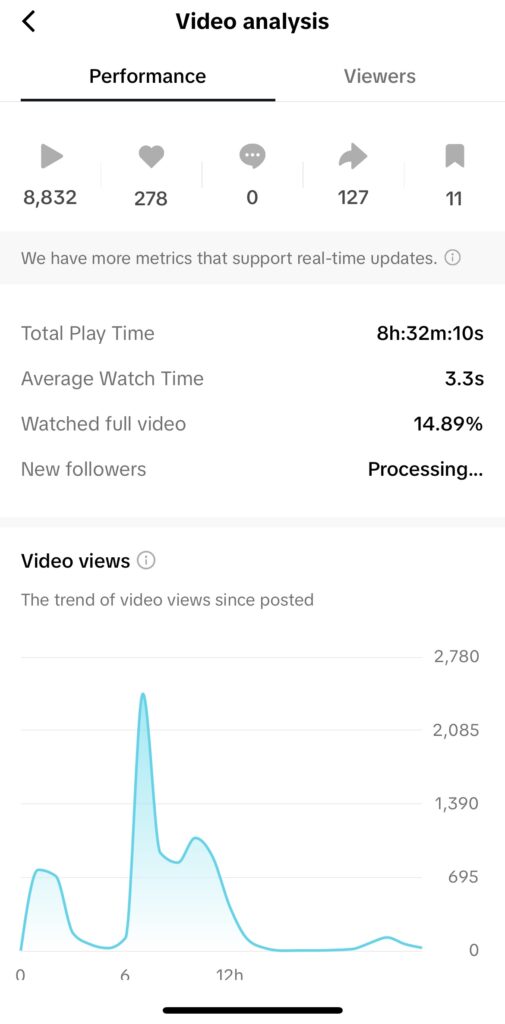
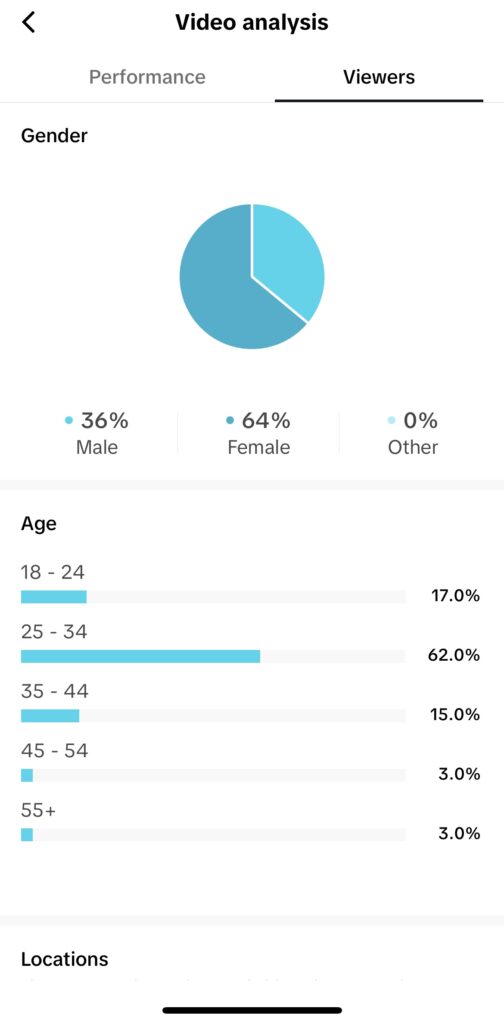
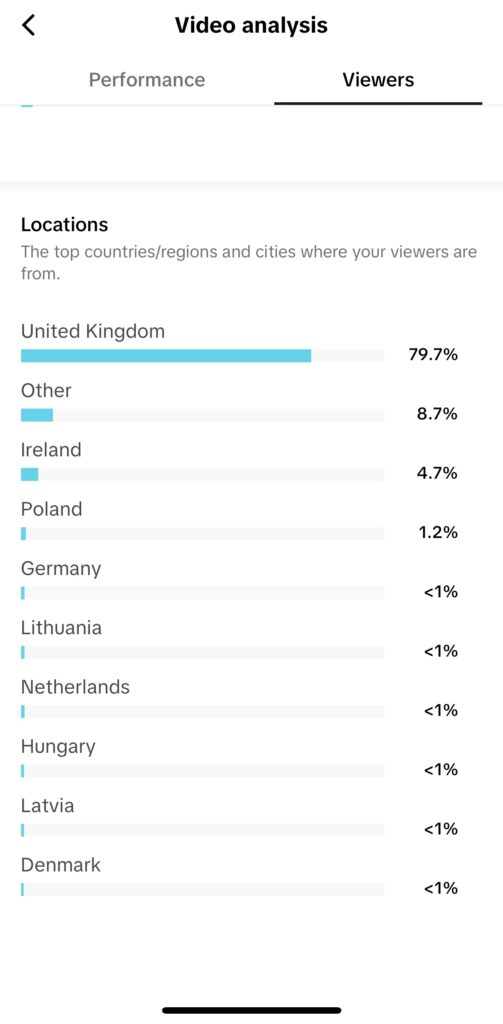
How to Implement Marketing Analytics into Your Strategy
Implementing marketing analytics into your growth plan is a process. Initially, define a clear set of goals you plan to achieve through analytics—a critical first step to avoid getting lost in the data.
Among the key metrics to monitor could be consumer engagement, lead generation, or reducing customer churn rates. Then, depending upon these objectives, choose the right analytics toolset.
Ensure that your data collection methods align with your business needs and privacy laws. Remember that data analysis is not a one-time task. It requires continuous tracking, analysis, and interpretation to provide deliverables that will constantly improve your wellness brand’s marketing strategy.
Finally, use your analytics insights to make informed decisions. Based on the data-backed insights, change your strategy.
Overcoming Common Challenges in Marketing Analytics
Integrating marketing analytics into your health and wellness brand may have numerous challenges. A common barrier is the vast amounts of data, which can seem overwhelming. The solution lies in focusing on the key metrics related directly to your set goals.
In addition, the technical expertise needed to handle complex data can be a concern. One solution is to invest in tools that simplify data analysis or outsource the job to experts.
Lastly, privacy issues are another hurdle in marketing analytics. Here, strict compliance with privacy laws and regulations is essential to ensure your audience trusts you with their data.
Remember, overcoming these challenges can be a game-changer and give your brand a competitive edge. So, get ready to harness the power of data for an enhanced marketing strategy!
Future Trends in Marketing Analytics for Health and Wellness Brands
- A glance at the encroaching role of AI and Machine Learning in optimising health and wellness campaigns
- Importance of data privacy in today’s marketing analytics
- The game-changing role of big data in future health and wellness marketing campaigns
The Rise of AI and Machine Learning in Marketing Analytics
Machine learning, a subset of Artificial Intelligence (AI), has become a crucial tool in marketing analytics. Companies in the health and wellness sector are incorporating AI mechanisms to analyse customer behaviour and buying patterns, optimising their marketing campaigns, and ensuring a significant ROI. AI and machine learning provide a deep understanding of market dynamics and forecast future trends based on historical data.
The Growing Importance of Data Privacy in Marketing Analytics
Data privacy is gaining prominence in marketing analytics in today’s digital age. Health and wellness brands are becoming increasingly cautious about handling consumer data securely due to rising data breaches and stringent regulations like GDPR. Data privacy is a cornerstone in building consumer trust – a fundamental element for any successful health and wellness brand.
The Role of Big Data in Future Health and Wellness Marketing Campaigns
Big data refers to vast volumes of diverse data generated at high speeds, requiring specialised systems for efficient processing and analysis. Its goal is to extract valuable insights and patterns from this data to inform data-driven decisions and gain a competitive edge across various domains. It is indeed a big player in upcoming marketing trends.
More than ever, brands use big data to identify customer needs, preferences, and more, ultimately personalising marketing strategies to meet these insights. The ability of big data to provide real-time insights can prove pivotal in the competitive health and wellness sector.
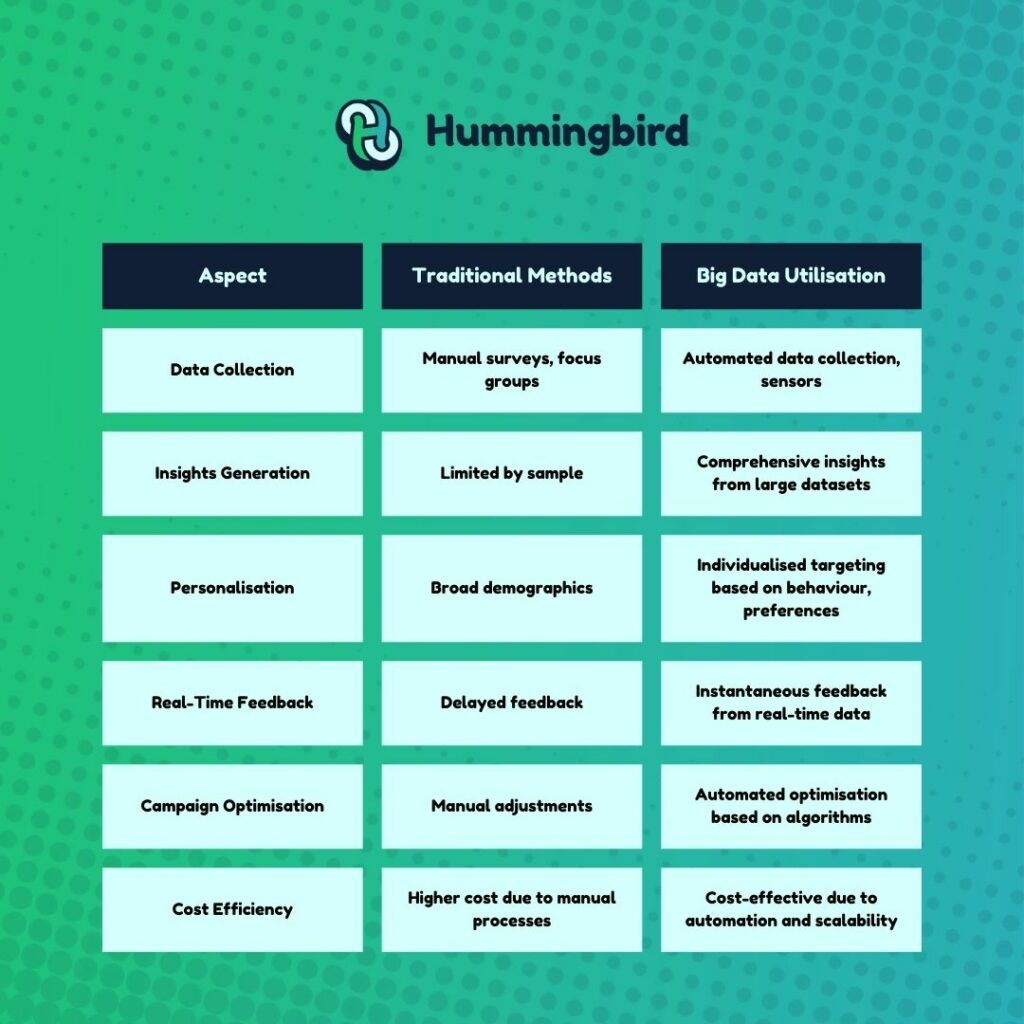
Applications of Big Data by Renowned Health and Wellness Brands
- Fitbit: Fitbit utilises big data from millions of users to analyse fitness trends, sleep patterns, and health metrics, providing personalised recommendations and insights.
- MyFitnessPal: This app collects data on users’ dietary habits and physical activities, leveraging big data to offer personalised meal plans, calorie tracking, and nutrition insights.
- Nike: Nike’s running app collects user workout data, analyses performance metrics, and offers personalised training plans.
- Peloton: Peloton uses big data to track users’ workout progress, customise virtual classes, and recommend personalised training programs.
Big data revolutionises health and wellness marketing by enabling personalised strategies, real-time insights, and cost-effective campaigns, setting a new standard for industry competition.
Conclusion
Understand your audience. Leverage social media analytics. Create engaging content based on data. Experiment with different marketing channels. Continually review and adapt your strategies. Future proof of your health and wellness brand.
This isn’t about overwhelming you with numbers. It’s about using smart analytical approaches to really understand who you are speaking to and what they want.
Harness what you’ve learned here. Study your audience. Dive deep into their wants and behaviours. Use that knowledge to refine your content, approach, and channels. Don’t rush. Make every change thoughtful, and always keep analytically fine-tuning.
Remember, those who adapt thrive!
Are you ready to propel your marketing strategy with data-driven decisions? Get in touch!
Want to learn about social media for your wellness brand? Here’s how to craft a winning social media strategy for your brand.



